In the wind, our canal boat, BONZO, wanders like an off-leash dog. The design, Phil Thiel’s Escargot, is intended for thin waters that aren’t likely to be subject to breezes, but my son Nate and I often get into little skirmishes with the wind on Seattle’s Lake Union, Lake Washington, and Puget Sound. The hull draws only 6″, and above the waterline are flat sides, each measuring 70 sq ft, so when the wind’s on the beam, BONZO’s bow falls off, sometimes quite precipitously. And motoring into a headwind is like balancing a broom upside down—there’s a lot of movement at the bottom to keep the top in line. The boat is also slow to respond to turns. The dark ipe board on the outside of the leeboard is through-bolted to the sheer guard and the hull and meant to provide a structure stronger than just a pivot bolt going through the leeboard and the hull.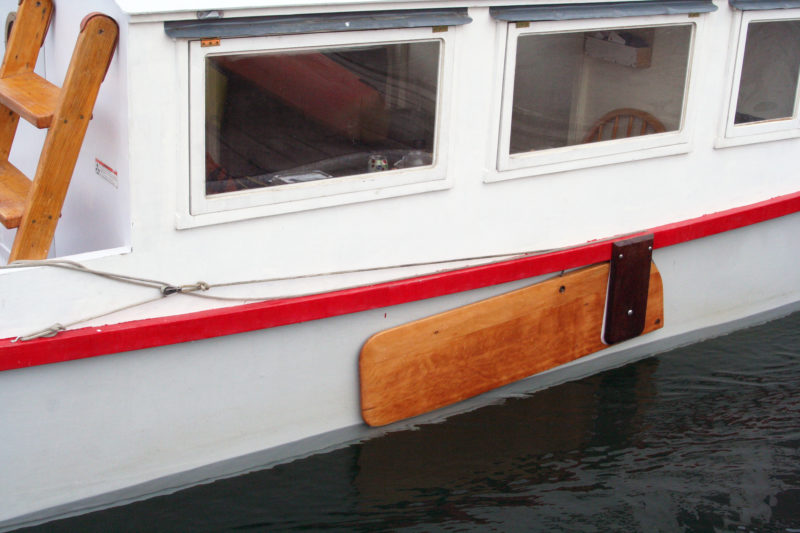
Join The Conversation
We welcome your comments about this article. If you’d like to include a photo or a video with your comment, please email the file or link.
Comments (13)
Leave a Reply
Stay On Course


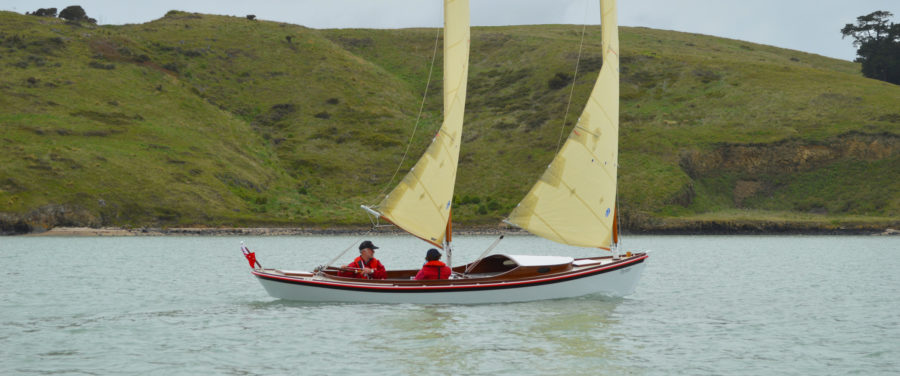
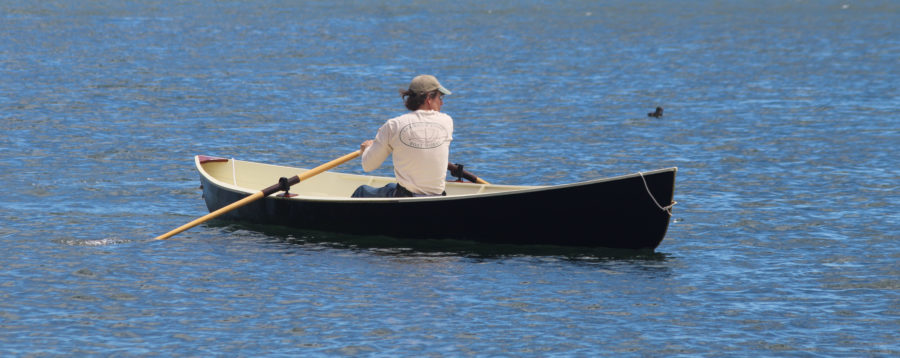

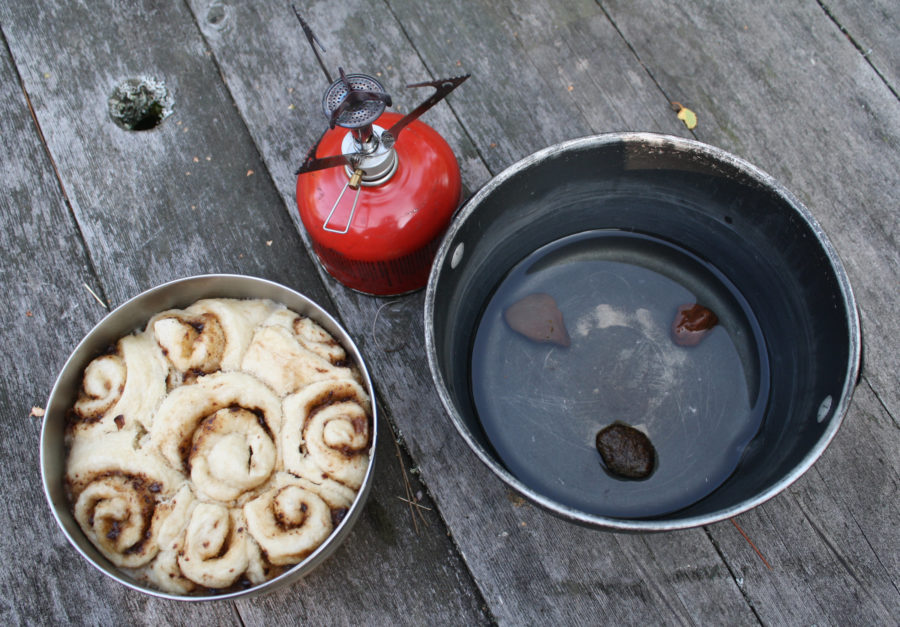
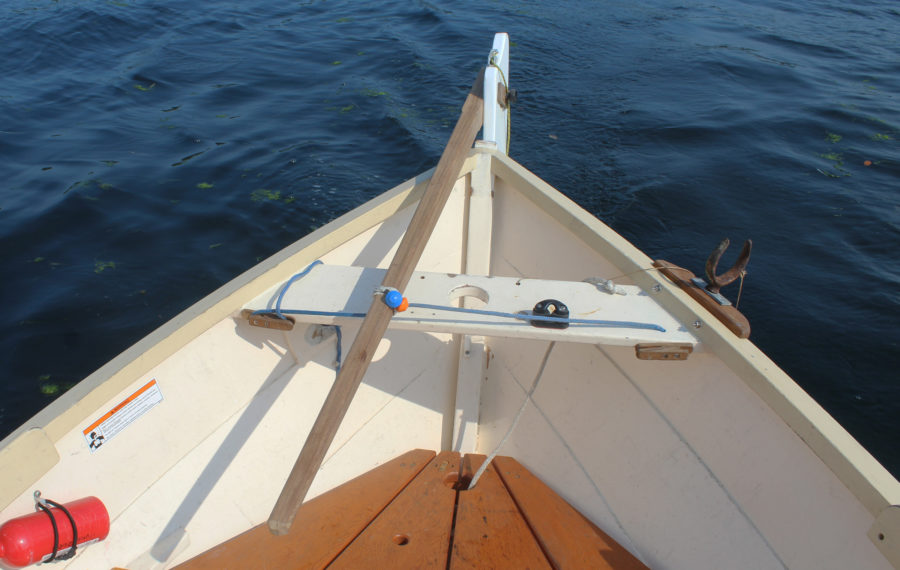
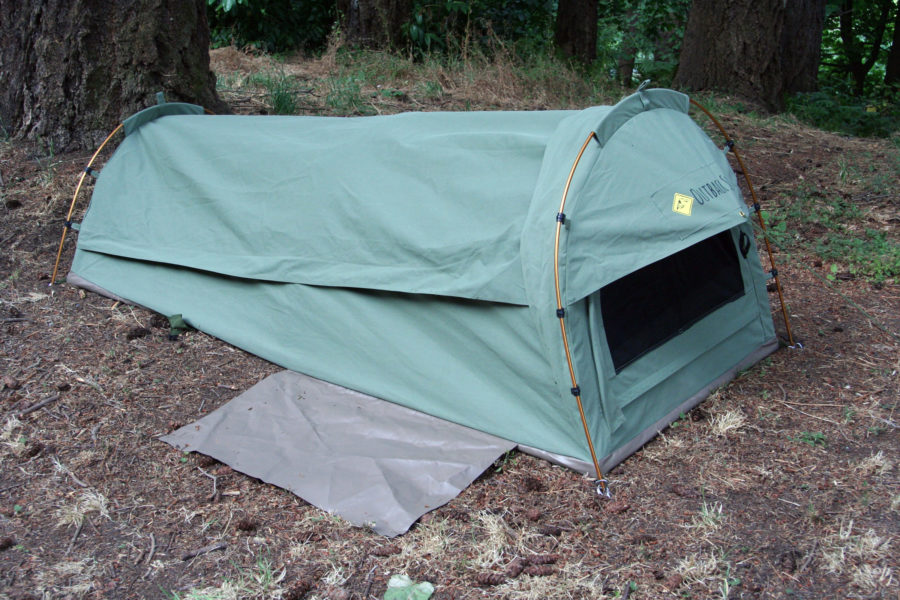
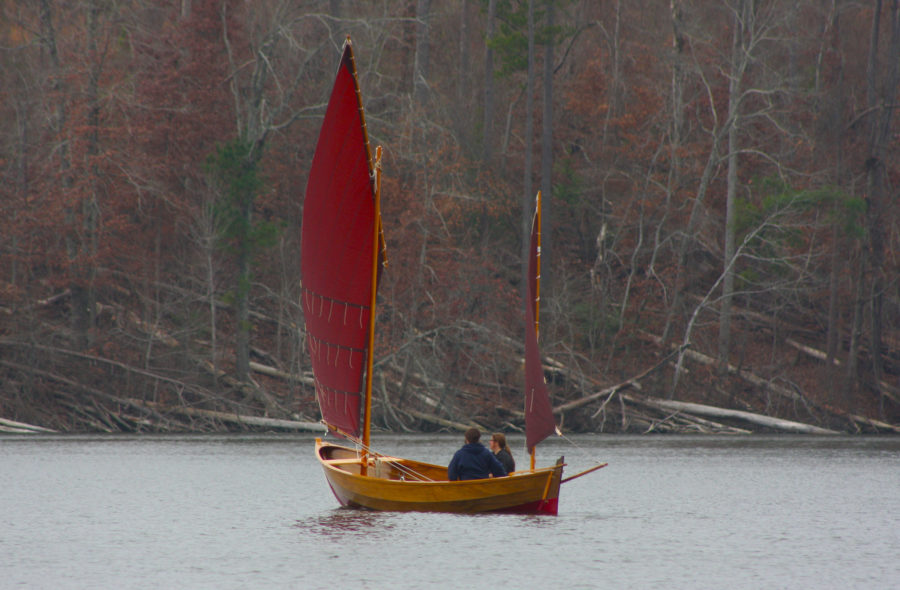
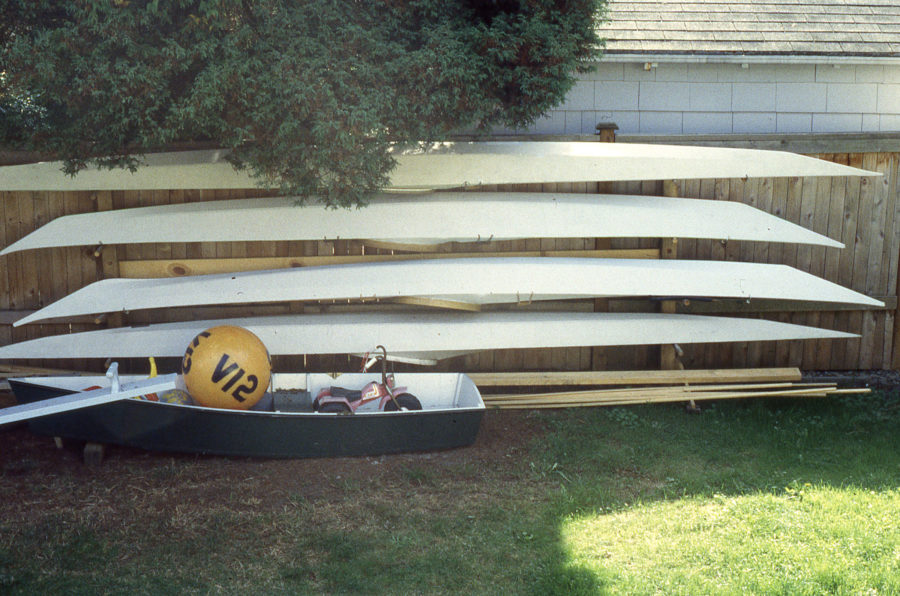
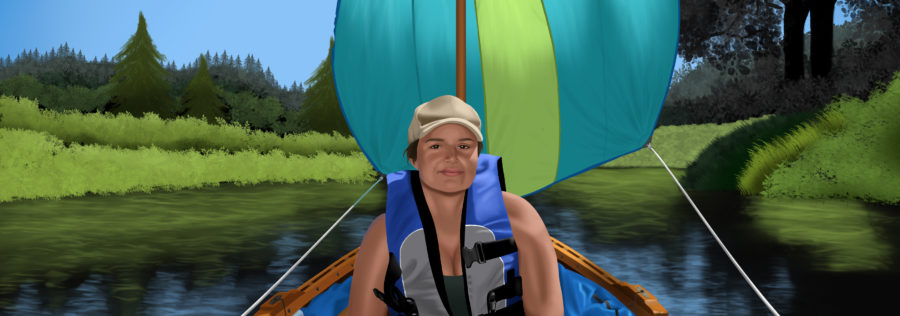
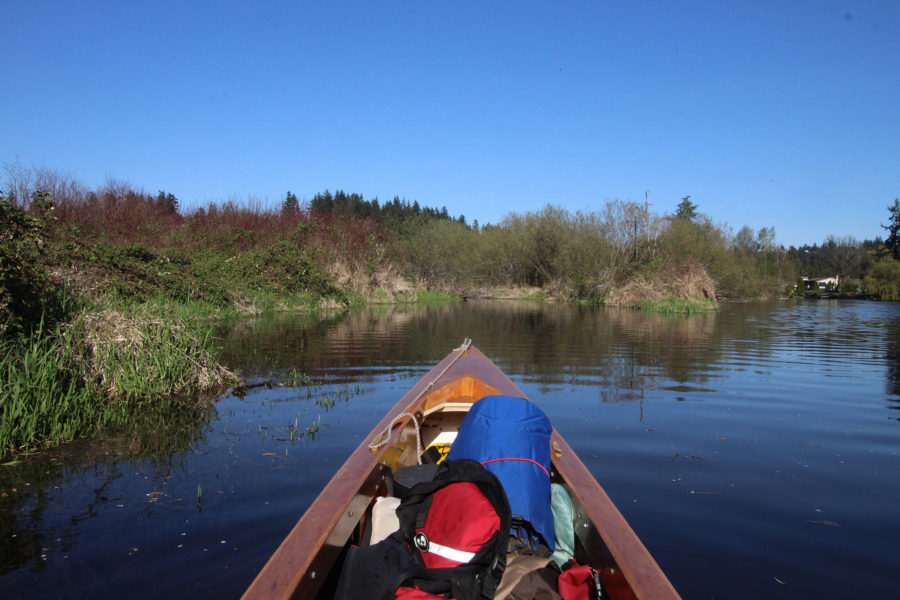

I have wondered at this exact same thing as I have just built the hull for a 20′ shanty boat that will only have about 5-6″ of draft. The other option I considered would be dual rudders. It would help it track straighter while underway, but you would not have the same turning radius. Perhaps when I am finished we can compare! Thanks for the article.
Dual rudders might give you more steering power, but adding more lateral resistance on the stern with a second rudder will not help the bow stay on track in a crosswind. The bow will still slide downwind.
I have read several articles on putting skegs on the rear of towed and powered barges that help directional stability quite dramatically. Nautican hydrolift skegs are one extreme example. I considered twin rudders because some of the most efficient skeg designs resemble foiled rudders. But in the end I think that your solution is more effective, simpler, and deals more directly with the wind. I will let you know how it goes!
Afterword:
Nate recently took a group of friends out on BONZO for a Sunday afternoon cruise. I went out kayaking a few hours later and caught up with him. He was using the outboard to steer (BONZO has a rudder but we often leave it in the cabin while under power) and working against a crosswind pushing against the port side. He had the tiller over in a hard turn to port to hold a straight course and BONZO was crabbing across the wind. The leeboard was still retracted so I told one of Nate’s friends to lower it. Once the board took hold, Nate could steer normally and BONZO straightened out.
A second afterword:
This week we took BONZO out on a rainy, windy evening. We had arranged to pick up one of our party at a dock on the south end of Lake Union with a northerly kicking up whitecaps here and there. We motored in tight circles while waiting, something BONZO wouldn’t have been able to do without the leeboard.
Sorry, I am having difficulty understanding your leeboard’s raise and lower system. Where is the runner? Is it a block in the lifting line? The leeboard is a great idea. Really makes the design maneuverable.
Yes, the arrangement to lift the board is a runner, i.e. a block on the line that is connected to the trailing edge of the leeboard, and the line handled from the cockpit is anchored on one end and reeved through the block so the working end has a 2-to-1 mechanical advantage. The advantage is necessary because the hole in the board for the lifting line is located at a point that is right at the waterline when the board is lowered, making for a heavy lift
Hi,
Keen to know more in respect to design, placement, and installation for my Bolger Tennessee in Australia on the Murray River?
The project is one that didn’t require sophisticated design work. Any board attached to the side about amidships will provide additional lateral resistance. A rough foil shape will help reduce drag and some reinforcement of the side of the boat is required around the pivot bolt where it passes through. I added the short bit of wood outside of the leeboard and bolted it to the sheer guard to move some of the prying force away from the bolt. This seems to be enough for a powerboat that isn’t subjecting the leeboard to the lateral pressure sails would impart.
I love the simplicity of this solution. If you were to build again do you think making the rub strips on the bottom a little taller would help? Of course – rub strips would not help you with the pivoting. I was thinking dual motors for that but hmmm. Expense of second motor or this simple solution. Which also assist with the downwind sail option. Thanks again. enjoying the various adventures of BONZO & Co.
I’d keep the rub strips the same, low and close to the hull. Making them taller would give them more leverage to damage the hull. More area on the strips could slow falling off to windward, but slow the rate of turning too. I agree dual motors would be expensive and likely not a very effective solution; what’s needed is lateral resistance, not more power. The leeboard is inexpensive, easy to deploy, and not only cured downwind drift but also made the boat more maneuverable.
Hello Christopher,
Would leeboards port and starboard be more effective on a larger boat, ie; Joli Boat? Also, would the length of the boards need to be increased? Thanks in advance for your reply.
The Escargot and Thiel’s larger canal boats sit on barge hulls and have no sails to make them heel, so there’s no need to put leeboards on both sides for symmetry’s sake. I put the leeboard at the midpoint of the starboard side to balance the lateral resistance and keep the helm neutral. Other than that, I just eyeballed the leeboard for size. The result met my expectations. The larger Thiel boats could us more surface area than my leeboard and that could be achieved by making a board longer or/and wider, or one of two boards.